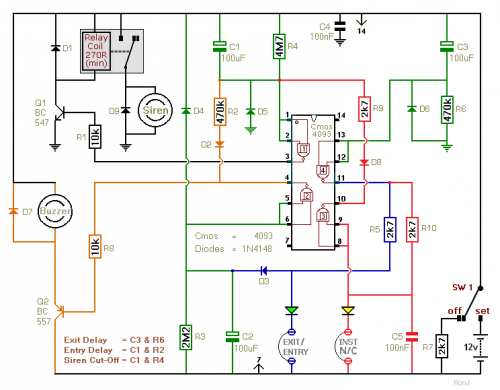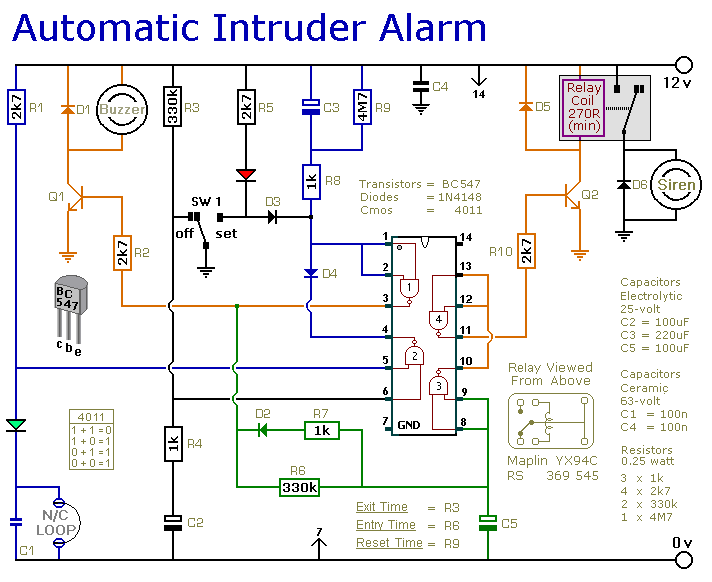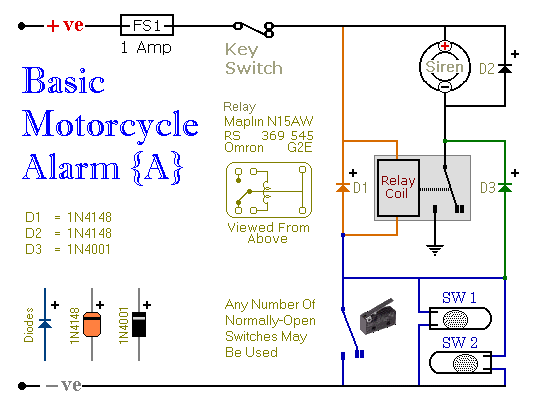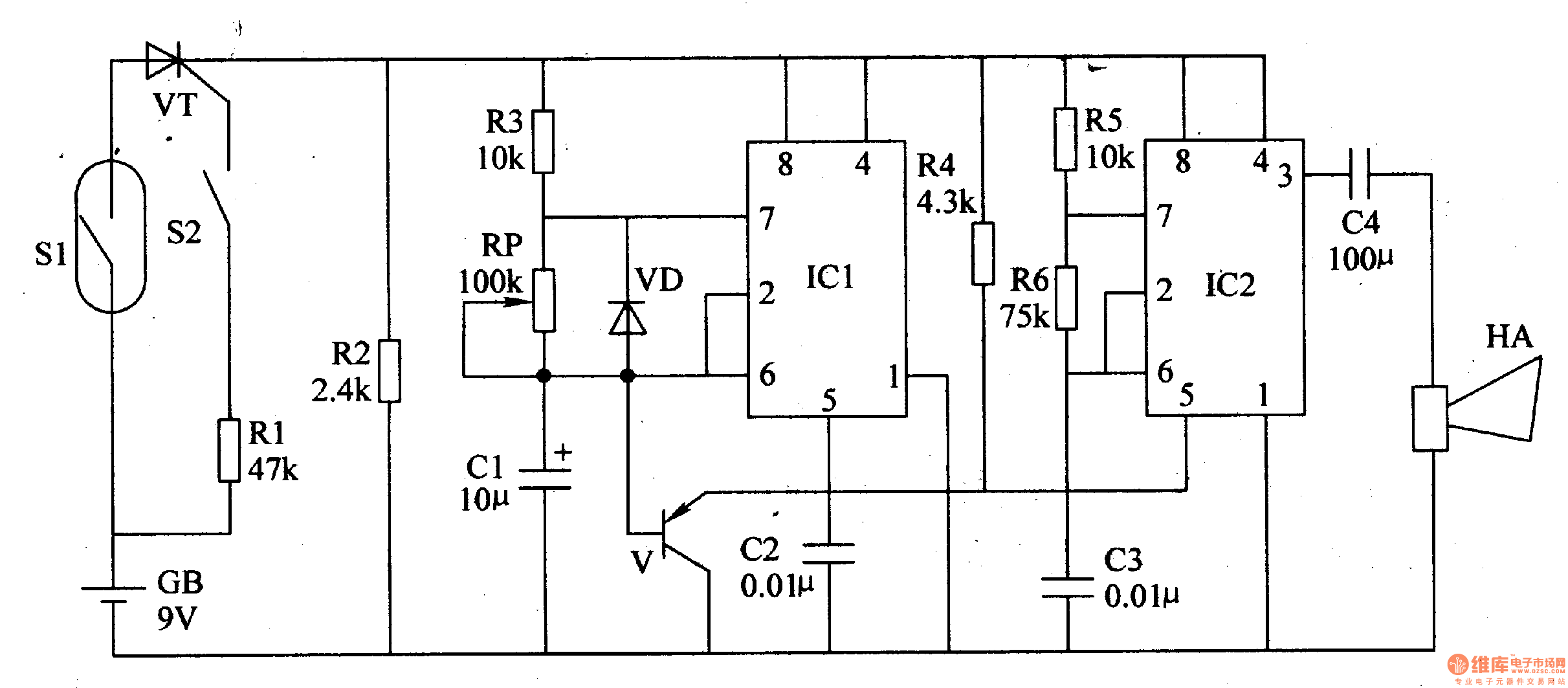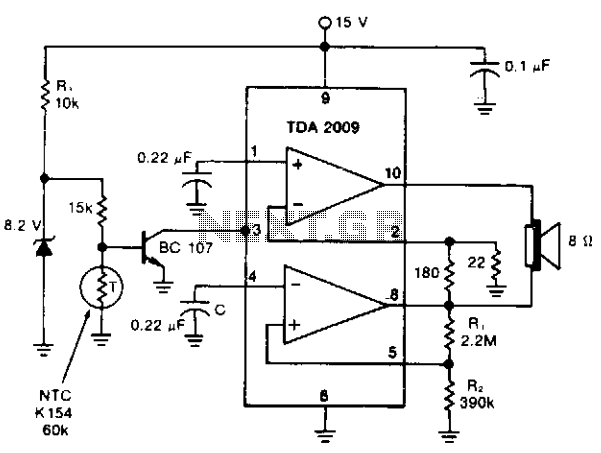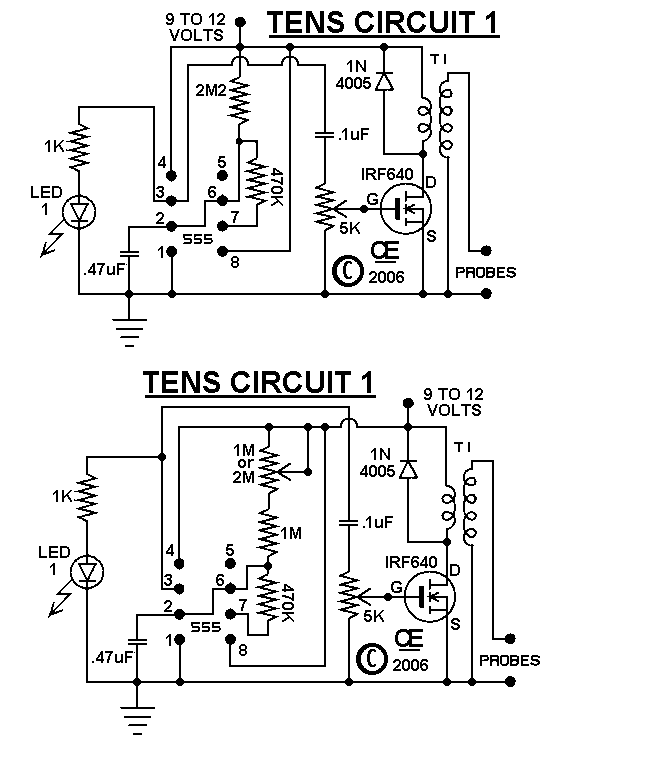
dozen small cmos alarm circuits

This is a collection of compact, self-sufficient alarm circuits designed for low standby current, making them ideal for battery operation. Some circuits are activated by normally-open and normally-closed switches, while others respond to variations in light or temperature. This leads to a diverse range of output durations and patterns.
The alarm circuits are engineered to operate efficiently with minimal power consumption, which is critical for applications where battery life is a primary concern. The circuits utilize a variety of triggering mechanisms, allowing for flexibility in deployment. For instance, normally-open switches require the circuit to close to activate the alarm, while normally-closed switches activate when the circuit is interrupted. This dual functionality facilitates the integration of the circuits into different environments and applications.
Additionally, circuits that respond to changes in light or temperature are equipped with sensors capable of detecting specific thresholds. For example, a light-sensitive circuit may activate when ambient light levels drop below a certain point, while a temperature-sensitive circuit might trigger an alarm if the temperature exceeds or falls below set limits.
The output of these alarm circuits can vary significantly, with options for different timing sequences and alarm patterns. This variability allows users to customize the alarm response to suit specific needs—whether it be a quick alert or a prolonged warning signal. The design considerations for these circuits include stability, reliability, and adaptability, ensuring they can function effectively in various scenarios, from home security systems to environmental monitoring applications.
In summary, these small self-contained alarm circuits represent a versatile solution for low-power applications, with diverse triggering options and customizable output patterns, making them suitable for a wide range of uses in both residential and commercial settings.This is a selection of small self-contained alarm circuits. They have a very low standby current; and are suitable for battery operation. Some are triggered by normally-open and normally-closed switches. Some react to changes in light or temperature. The result is a variety of output times and patterns.. 🔗 External reference
The alarm circuits are engineered to operate efficiently with minimal power consumption, which is critical for applications where battery life is a primary concern. The circuits utilize a variety of triggering mechanisms, allowing for flexibility in deployment. For instance, normally-open switches require the circuit to close to activate the alarm, while normally-closed switches activate when the circuit is interrupted. This dual functionality facilitates the integration of the circuits into different environments and applications.
Additionally, circuits that respond to changes in light or temperature are equipped with sensors capable of detecting specific thresholds. For example, a light-sensitive circuit may activate when ambient light levels drop below a certain point, while a temperature-sensitive circuit might trigger an alarm if the temperature exceeds or falls below set limits.
The output of these alarm circuits can vary significantly, with options for different timing sequences and alarm patterns. This variability allows users to customize the alarm response to suit specific needs—whether it be a quick alert or a prolonged warning signal. The design considerations for these circuits include stability, reliability, and adaptability, ensuring they can function effectively in various scenarios, from home security systems to environmental monitoring applications.
In summary, these small self-contained alarm circuits represent a versatile solution for low-power applications, with diverse triggering options and customizable output patterns, making them suitable for a wide range of uses in both residential and commercial settings.This is a selection of small self-contained alarm circuits. They have a very low standby current; and are suitable for battery operation. Some are triggered by normally-open and normally-closed switches. Some react to changes in light or temperature. The result is a variety of output times and patterns.. 🔗 External reference
